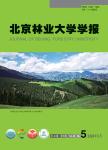Success factors for high-quality oak forest(Quercus robur, Q. petraea) regeneration
Success factors for high-quality oak forest(Quercus robur, Q. petraea) regeneration作者机构:Department A (Forest Growth) Northwest German Forest Research Institute(NW-FVA)
出 版 物:《Forest Ecosystems》 (森林生态系统(英文版))
年 卷 期:2019年第6卷第4期
页 面:367-383页
核心收录:
学科分类:0710[理学-生物学] 0830[工学-环境科学与工程(可授工学、理学、农学学位)] 0907[农学-林学] 08[工学] 0829[工学-林业工程] 09[农学] 0901[农学-作物学] 0833[工学-城乡规划学] 0713[理学-生态学] 0834[工学-风景园林学(可授工学、农学学位)]
主 题:Close-to-nature forestry Competition Ecological continuity Forest inventory Forest management Plantplant interactions Quercus robur Quercus petraea Regeneration Silviculture
摘 要:Background: Within the framework of close-to-nature forestry, oak forest(Quercus robur, Q. petraea) regeneration techniques that consider both silvicultural and nature conservation demands have become a very important *** there are many experimental and local studies that aim at disentangling the relationships between different environmental and silvicultural factors and the success of oak regeneration, systematic supra-regional studies at the greater landscape level are missing so *** this background, the first objective(a) of this study was to present an efficient and sufficiently accurate sampling scheme for supra-regional forest regrowth inventories, which we applied to young oaks stands. The second, and major, objective(b) was to identify the crucial success factors for high-quality oak forest regeneration in northwest ***: Objective(a): Factors that have been identified as potentially crucial for the success or failure of oak regeneration were either included in a field inventory procedure or extracted from forest inventory databases. We found that the collected data were suitable to be analyzed in a three-step success model, which was aimed at identifying the crucial success factors for high-quality oak forest ***(b): Our modeling procedure, which included a Bayesian estimation approach with spike-and-slab priors,revealed that competitive pressure from the secondary tree species was the most decisive success factor;no competition, or low competition by secondary tree species appeared to be particularly beneficial for the success of high-quality oak regeneration. Also fencing and the absence of competitive vegetation(weeds, grass, bracken)seemed to be beneficial factors for the success of oak ***: Trusting in biological automation was found to be mostly useless regarding economically viable oak forest regeneration. To efficiently organize oak regeneration planning and silvicultural decision-ma



